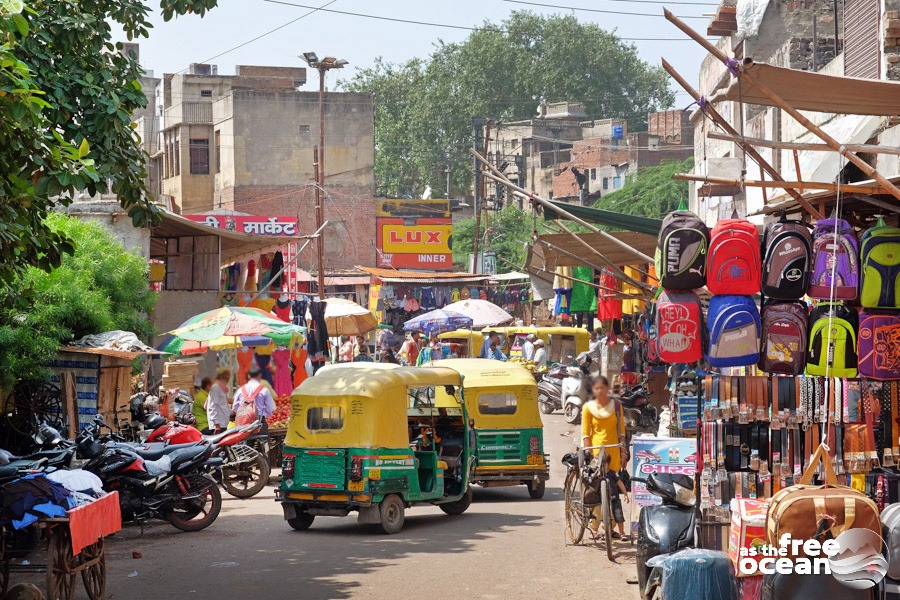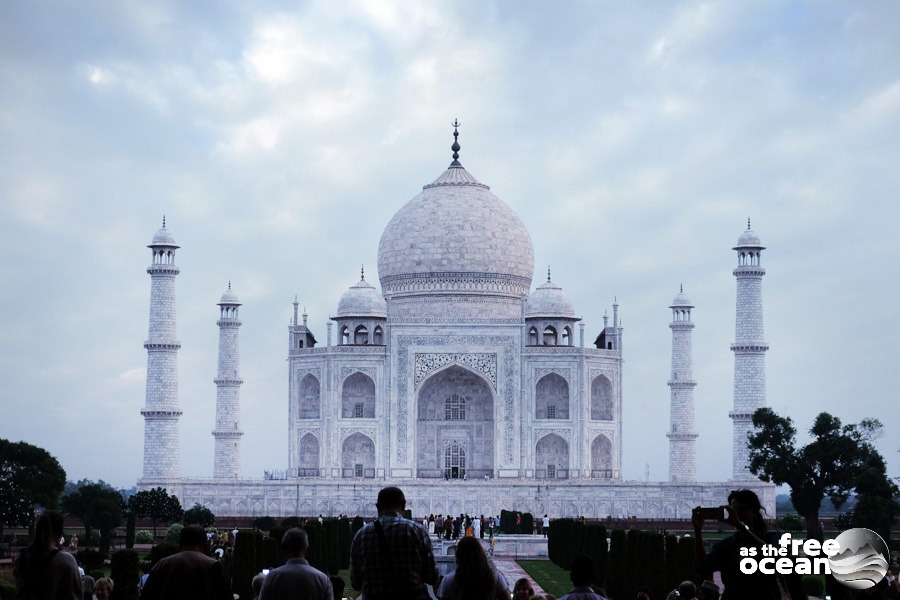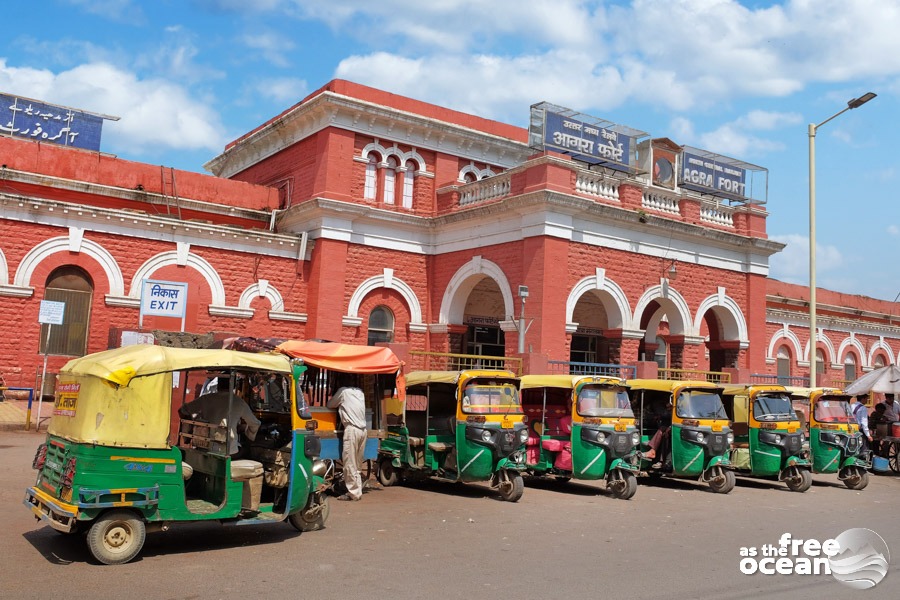Ever since we arrived in Jaipur, we could feel that we were traveling on a more touristic route. We took the train from Jaipur to Agra, arriving late in the evening in a crowded station and soon after at our hostel, somewhere in the vicinity of Agra’s and India’s most famous landmark, the Taj Mahal.
While most people recommend staying in the city for less than two days, we stopped there for five days. As we could notice from the first morning when we went for a walk to explore the neighborhood, there is little going on in this city and the points of interest are few. But we decided to stop for a longer time due to our work and because we also wanted to have some proper time to rest. Traveling through India can be a very tiring experience and, with so much to see and do, it is advised to travel slowly.
The city of Agra
The Taj Mahal and the Agra Fort are beautiful landmarks to visit, but the rest of the city disappoints with its more than crowded streets (which is not something unusual in India) and the extremely pushy drivers and vendors that constantly try to sell you something, without accepting any form of refusal. They can be very stressful and the closer you get to the touristic areas, the more they manage to lower your enthusiasm. The heavy traffic is another big problem here. We found out from our host that the administration of Agra did not allow people anymore to register tuk tuks in the city, because of the high number of such vehicles on the streets.

We went through a series of new experience during our stay in Agra, from verbally fighting with people because of their aggressive behavior towards tourists, to seeing a cow entering the restaurant where we were eating and almost joining us for lunch or observing a monkey stealing bananas from the kitchen of the place where we usually had our afternoon coffee. Things were definitely different and we experienced India in a more intense way by the time we got closer to the end of our trip.
The Taj Mahal
The main reason why people travel to Agra is the famous Taj Mahal, probably the most known landmark in India and one of its symbols.
We visited the mausoleum during our third day in Agra. It took us just 15 minutes to walk from our hostel to the entrance gate. It can take longer or less time if you walk, according to how well you manage to respond to the presence of the many people approaching you. If you want to avoid the “friendly locals”, you should know that inside the touristic area you can benefit from free transfers to the entrance gate, in small electric cars.

It was still dark outside when we left the hostel, as we planned to be there during sunrise, because of the cooler air in the morning, the lower number of people inside and for the more beautiful atmosphere that surrounded the monument under the morning light. Foreigners are required to pay an entry fee of 1250 rupees (1200 if you pay by credit card) while local people are allowed to enter for free (which probably explains best why the area is always crowded).

The city disappointed us in many ways, but the Taj Mahal didn’t. It isn’t just an overrated destination, but a truly beautiful one, that deserves all its fame. We passed the giant gate at the entrance and walked towards the garden, where we stood speechless in front of the beautiful mausoleum.

Tons of white marble and precious materials were used for its construction, brought mainly from India, but also from the surrounding countries. The plinth and tomb took approximately 12 years to complete, while another 10 years were necessary for finishing the whole complex, including the large garden, the minarets, the mosque and other architectural details. Nowadays it is considered one of the new wonders of the world.
The story behind the construction of the Taj Mahal is a love story with an unhappy ending. The project was initiated by the Mughal emperor, Shah Jahan in honor of his favorite wife, Mumtaz Mahal, who died giving birth to one of their children. Nowadays, their deceased bodies rest together inside the large tomb of the mausoleum.
As the sun got hotter and the crowds bigger, we decided to leave the area and looked for a place to have breakfast. On the way back we found a restaurant with a terrace overlooking the Taj Mahal.

For a better view from outside, we recommend walking around it to the riverside. The viewpoint is indicated on both Google Maps and Maps.Me, the two mobile apps that we are usually using.

For a different perspective, a tuk-tuk ride could bring you to the other side of the river, from where you can get a good picture without the crowds.
Five days later we were almost at the end of our journey through India. We went to the railway station in Agra to catch the train to New Delhi.

As if Agra didn’t want to let us go, we were informed that the train had a big delay, which brought us to the decision to take a bus, in the hope that we would save some time. The idea seemed good when we arrived at the bus station and instantly boarded the bus that was leaving to Delhi, just to have our expectations lowered by seeing the bus breaking down shortly before we even left the city. Half an hour later another bus came to pick us up.
It took around 4 hours to arrive in Delhi, with a bus whose driver did not even consider making a stop in between for people to use the toilet and who dropped us outside the city at the arrival in New Delhi. We already knew then that the capital city if India would not feel like one of the most welcoming of our destinations.
Check out more pictures of Agra here.




